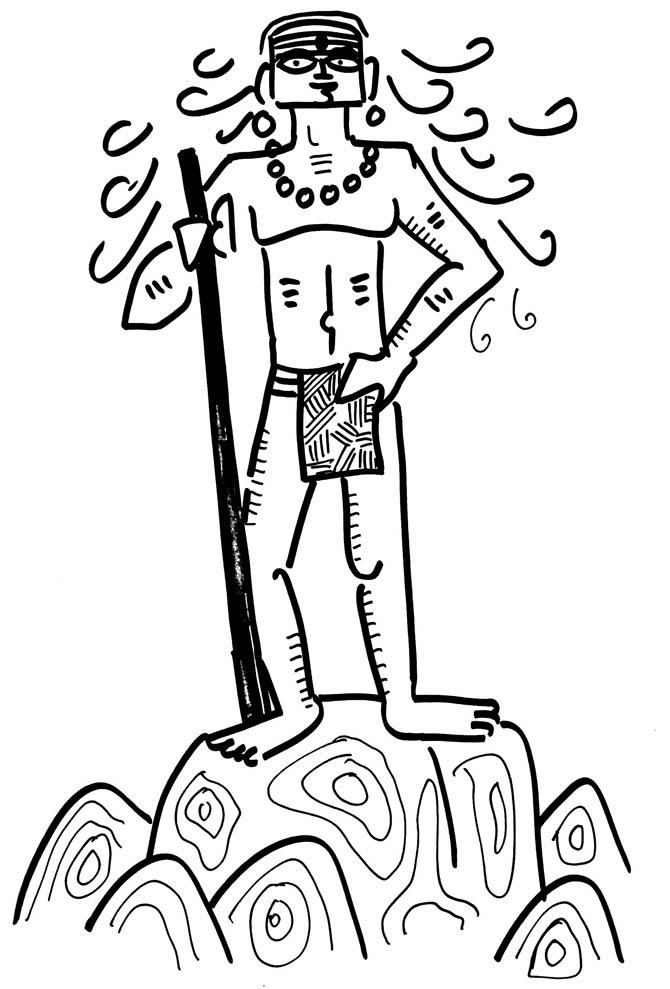Murugan is the southern form of Kartikeya, son of Shiva. Or rather, Kartikeya, son of Shiva, is the northern form of Murugan

 Murugan is the southern form of Kartikeya, son of Shiva. Or rather, Kartikeya, son of Shiva, is the northern form of Murugan. In Tamil Sangam literature, dating to 1,500 years ago, and referring to earlier oral tradition, Murugan is associated with mountains. This was the period that Vedic ideas became increasingly prominent in the Southern half of India. Thus, the barren desert came to be associated with goddess Kali, the sea shore with Varuna, the forests with Vishnu and the fields with Indra. Murugan stood atop mountains, and came to be associated with Shiva, as his son, indicating Shiva as an over-arching divinity, although in local legends, Shiva himself learns the secret of Pranava (the ‘om’ sound) from Murugan, which makes Murugan the teacher of his father. Most North Indians are unfamiliar with this story, but it quite popular in Tamil Nadu that boasts Arupati Vitu, the six temples of Murugan that make a popular pilgrim route. Though the shrines may be older, the temples we see now were built in various phases in the past 1,000 years by various kings.
Murugan is the southern form of Kartikeya, son of Shiva. Or rather, Kartikeya, son of Shiva, is the northern form of Murugan. In Tamil Sangam literature, dating to 1,500 years ago, and referring to earlier oral tradition, Murugan is associated with mountains. This was the period that Vedic ideas became increasingly prominent in the Southern half of India. Thus, the barren desert came to be associated with goddess Kali, the sea shore with Varuna, the forests with Vishnu and the fields with Indra. Murugan stood atop mountains, and came to be associated with Shiva, as his son, indicating Shiva as an over-arching divinity, although in local legends, Shiva himself learns the secret of Pranava (the ‘om’ sound) from Murugan, which makes Murugan the teacher of his father. Most North Indians are unfamiliar with this story, but it quite popular in Tamil Nadu that boasts Arupati Vitu, the six temples of Murugan that make a popular pilgrim route. Though the shrines may be older, the temples we see now were built in various phases in the past 1,000 years by various kings.

Illustration/Devdutt Pattanaik
ADVERTISEMENT
The six temples also indicate the different events in the life of Murugan. At Swamimalai, he is the son who revealed the secret of ‘om’ to his own father, and even to Brahma, the creator, who pretended to know the Vedas, when all he knew were the words, not the meaning. At Palni, one of the most popular shrines, he is the young student bearing a staff, Dandapani, who left his father’s abode, at Mount Kailasa, as his father favoured Ganesha over him. At Thiruchandur, near Tuticorin, the only temple located at the sea shore and not a mountain top, he is the warrior who defeated the dreaded Surpadman, who repented, and so was converted into his peacock-vehicle and rooster-banner. At Thirupparamkunram, he married Devayani, the daughter of Indra, who was pleased with the defeat of Surpadman. At Thiruthani, he married Valli, the tribal princess, following an intense love story — though in some stories, he married Devayani here. At Pazhamudircholai, he is the householder, shown with both his wives, the celestial Devayani and the temporal Valli.
In Murugan, Shiva, the distant stoic sage, unites with the vibrant demanding goddess Shakti. Two ideas come together with a popular folk deity and become a nodal point of local Hinduism. A study of Murugan reminds us how diverse Hinduism is, and while we trace everything to the Vedic scriptures, Vedic thought remains but one of the many tributaries of Hinduism, with Vedanta providing the most powerful intellectual framework to explain Hindu ideas. We see the pattern that is consistent in Hinduism: a journey from rejecting family and becoming a hermit to becoming a householder. This was clearly a rejection of monastic traditions such as Buddhism and Jainism that once dominated South India.
The temples of Murugan are associated with asuras and rakshasas. There are shrines where Murugan prays to Shiva; seeking peace for the soul of Surpadman’s younger brother, the dreaded Taraka-asura. And there are tales of how the mountains of Palani were actually brought down from the Himalayas by Hidimba, the rakshasa, who tied them to a litter that he slung on his shoulder. These mountains were gifts from Murugan’s mother, who felt he would miss the mountains back home after he moved south following his disagreement with his father. In his temples, Murugan is often visualised as a tribal, a warrior-king, a Vedic priest and a monk, reminding us of the different communities that held sway in this region. Everyone is thus accommodated.
The author writes and lectures on relevance of mythology in modern times. Reach him at devdutt@devdutt.com
 Subscribe today by clicking the link and stay updated with the latest news!" Click here!
Subscribe today by clicking the link and stay updated with the latest news!" Click here!







